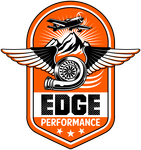- Compact size, low weight – takes minimal panel space, only 74mm deep
- Unique ‘Push Step’ feature provides the ‘fastest in class’ frequency selection
- Dual watch – monitor two frequencies at the same time
- Manual dimming feature (adjustable backlight)
- Dual Control – two controller option for tandem cockpits
- Simple Installation
- Free European Minor Change approvals
PRODUCT FEATURES
With a crisp clear display and simple user interface the Trig radio benefits from some great features; ‘Dual Watch’ feature allows monitoring of two frequencies at the same time. There are 9 pre-set channel memories which are easily selectable.
Trig’s compact radio is EASA ETSO and FAA TSO approved so it can be used worldwide. Our ‘Push Step’ feature enables the fastest tuning in its class – three times faster than in an 8.33 environment! For customers who do not require 8.33 channel spacing this feature can be disabled, allowing speedy selection between 50 kHz and 25 kHz spacing. This enables rapid change of frequency whilst providing fine tuning in 25 kHz steps if required.
Trig radios also feature a built-in high quality two place intercom with an aux-input, saving further cost and weight.
GPS COMPATIBILITY
The radio can integrate with popular GPS units; this allows the automatic display of en-route radio frequencies. Control of the radio via an EFIS display is also possible using industry standard SL40 and GTR225 protocols. This unique capability integrates your Trig radio with other avionics and provides real user flexibility.
PRODUCT DESIGN
The innovative use of a control head and separate radio hardware unit provides more installation options, especially when space is at a premium. The control head can be conveniently mounted in a full 57mm (2 ¼”) round hole or even smaller compact mount. Fitting is straightforward, and once installed the depth of the radio control head is only 74mm (3”). In practice this means that the Trig compact control head can be located in an aircraft instrument panel where a ‘single box’ radio will simply not fit. The compact radio is the perfect comms partner to our compact transponder Mode S (1090 ES ADS-B Out transponders).
PUSH STEP
The compact radio display is clear and bright, showing both primary and secondary frequencies. A ‘Push Step’ knob allows the fastest change from 8.33 kHz to 25 kHz – so you can tune the radio quickly without compromising your look-out. The Dual Watch feature allows two frequencies to be monitored at the same time – it’s like having two radios in one.
HEADSETS
The Trig compact radio two place intercom is optimised for use with standard aviation headsets – a number of adjustments allow the radio to be used successfully in noisy aircraft. The compact radio also has a built in speaker amplifier that can drive an external speaker, this is preferred by some glider pilots. If using a dynamic microphone with a Trig radio please note an amplified adaptor will be required.
WHAT'S IN THE BOX
- All Trig products come with a two year warranty, starting from the day of installation
- Installation manual and Operating manual
- Installation kit (including plastic brackets for round mounts)
- Tray
- EASA Form One
FREQUENTLY ASKED QUESTIONS
Are Trig radios easy to use?
The radio interface is simple and intuitive. All controls are positive and give good feedback, and can be used with gloves on. The ‘PUSH STEP’ button is a unique feature and allows the fastest selection between 25 kHz or 8.33 kHz steps.
In areas where 8.33 kHz is not used the push step function can be set to change between 25 kHz and 50 kHz steps, making frequency selection just as rapid.
How does the 'Push Step' feature affect 8.33kHz tuning?
The 8.33/25K push step does not affect the mode of the radio. You cannot turn off the 8.33 capability. The push step is only changing the size of the steps when you are tuning. It's there to make tuning faster – 4 times less turns to reach your desired frequency. For example, if you tune to an 8.33 channel, then click the push step to display the small 25k symbol, then you are still transmitting and receiving on the 8.33 channel you selected... only the size of the tuning steps changes for when you next turn the tuning knob.
Is the controller display visible in all lighting conditions?
The LCD display is clear and crisp in all lighting, full sunlight generates a very clear contrast and in dull or dark lighting the inbuilt lighting ensures the unit remains clear and legible. The controller has a backlight and manual dimming can be selected to increase or decrease brightness.
How does the compact fit or full round installation work?
All units ship with the necessary parts to enable you to choose to install the radio either as a compact mount or 2 ¼ “ full round. The TY91 and TY92 kit includes a template to assist you in cutting an accurate compact mount hole in the panel. If a full round mounting is required then you simply fit the included plastic blanks above and below the body of the TC90 controller.
Can I link my GPS to the radio?
Yes, if your GPS supports the SL40 protocol then 8.33 channels, in addition to 25 kHz and 50 kHz frequency data and airfield identifiers will be displayed in the TC90 Controller display window. TC90 software version 1.5 adds support for 8.33 channel spacing on an SL40 GPS.
Will I need to change my antenna?
Trig's compact radios are designed to operate with your existing operational antenna. One of the advantages of the Trig radio is that the hardware box can be mounted away from the panel and close to the antenna. A shorter antenna cable reduces signal loss and improves performance.
Can I play music through the radio?
Yes - Trig's compact radios have the capability to play music through your headset via an auxiliary input (mono).
What type of headset should I use?
Trig radios are designed to work with a standard aviation headset. Audio performance is good on both noise cancelling and standard headsets. If you wish to use the radio with headsets that have a built in intercom, such as those used in microlights you are advised to contact support@trig-avionics.com to check compatibility. You may require a third party intercom adaptor.
Can I use the radio without a headset?
Both radios have a built in speaker amplifier, this supports the connection of an auxiliary speaker allowing headset free operation. This is ideal suited to glider pilots, who may prefer to fly without a headset. If using a dynamic microphone with a Trig radio please note an amplified adaptor will be required.
Can I use the radios in open cockpit flying?
The TC90 Controller is designed to be splash proof and can be used in these open and harsh environments.
Can I operate the radio on batteries?
Operation of the radio from a battery is a practical option given the efficiency of the radio. Your Trig radio can be relied upon for many hours when powered by battery, our installation guide, on the Trig web site provides guidance on the best power sources to select and the duration you should expect these to operate for.
Can I use a second control head, connected to the main hardware unit?
Yes – this is called Dual Control and is ideal for tandem gliders and tandem training aircraft.
How can I find out about the wiring required to install the radio?
For information on installing the radio both the operation manual and install manual can both be viewed or downloaded. Please find the manuals in the left hand navigation.
If I am required to comply with the ICNIRP public limits for my aircraft radios, what do I need to do?
The ICNIRP is the International Commission on Non-Ionizing Radiation Protection, and they have proposed limits on the amount of radio frequency energy that the public should be exposed to. These limits cover every transmitting source, from TV stations to 5G mobile phone masts, and includes aircraft radios.
Because the amount of energy that reaches a body is a function of the distance from the transmitter, and because we know the transmit power of our radios, we can work out the safe distance that must be maintained to meet these limits. Fortunately, the average power of our radios is low compared to most broadcast transmitters, and therefore our safe distances are very small. For any Trig transponder, although the instantaneous pulse power is high, the duty cycle and the total transmitter-on time is so short that the average power is well below the 10 W applicability limit for ICNIRP, and therefore your transponder is not affected by ICNIRP.
For our VHF radios, although you probably don’t transmit all the time, it is certainly possible to exceed the 10 W limit. That is even true for our 6 W rated transmitters - because the ICNIRP limit takes account of the antenna gain and directionality, and the field strength can be higher than the nominal power. You therefore need to consider the safe distance for these radios between the transmitting antenna and any member of the public. The actual safe distance will depend on the transmitting antenna configuration, but we have calculated the distances for conventional aircraft antennas.
Allowing for typical antenna cable losses, for our 16 W radios, such as TY97 and TY92, the safe distance is about 1.8 metres or 6 feet. For our 10 W radios, such as TY96 or TY96A, the safe distance is about 1.51 metres, or 5 feet. Finally, for our 6 W radios the distance is about 1.17 metres, or 3 feet 10 inches.
You can see that none of these distances will affect members of the public near to your aircraft in flight, or even whilst operating on the ground. The definition of “general public” also does not include the pilot of the aircraft, or anyone involved in operating the aircraft – they are assumed to be aware of the risks, and to have taken an informed decision to participate.
The “general public” however, does include passengers. You therefore need to consider the orientation of the passenger seats in relation to any transmitting antenna, and the extent to which they are shielded by the cabin structure and by any ground plane provisions. For many metal aircraft the construction means that the occupants are naturally shielded from transmissions, making this less of an issue. For other types, you may need to perform more analysis. Solving that is outside the scope of this FAQ. for information about the ICNIRP see www.icnirp.org




.png)







